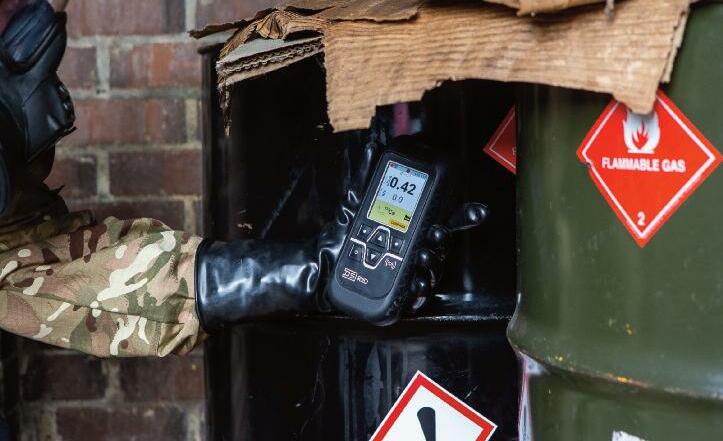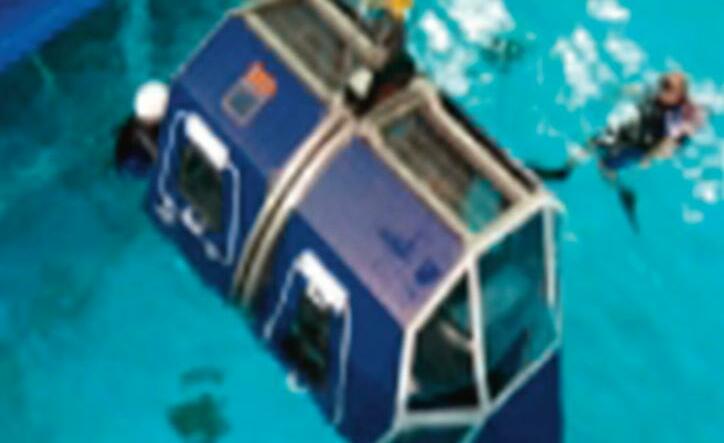
9 minute read
Lutra Associates - Some Thoughts on Trends in Defence
SOME THOUGHTS ON TRENDS IN DEFENCE
In and around Summer 2022 Lutra has been getting back into the defence scene at events and seminars as well as continuing to follow events in Ukraine and elsewhere. This has caused us to increase our pondering on what the trends in defence are.
Equipment and doctrine are particular issues as are defence procurement and domination of the airwaves but there are many other issues; integrity, diversity, loyalty being but three.These issues and several others all contribute to the moral fibre of defence so understanding them is mandatory. They are not for discussion here but if you are in or going into defence provision it is worth sharing a few thoughts about them when we next meet. Many events have shown that the nature of conflict is changing and not just armed conflict either. There have always been machinations of all sorts in areas of ideological, territorial or economic conflict but recently this has become more full on. Thanks largely to the advent of 24 hour mass electronic connectivity and availability, which in itself is a conflict area, the pace and scope of conflict has widened.
Mastery of the ether confers information and intelligence dominance and can be used as a really effective weapon system particularly when combined with selective kinetic systems or activity this contributes to establishing dominance of the “head space” battle or winning the psychological war. The concept is not new. We can all pull up a quote from Sun Tzu, Napoleon or Montgomery to reflect its importance in history. Now it’s more important, intense and intrusive. The number of non-state actors acting on behalf of states, but conferring the benefit of deniability, is a relatively new phenomenon. It makes for a complex and much more challenging battlespace.
Perhaps the lesson emerging, or we should say remerging is the Cold War creed, forgotten during Northern Ireland, Iraq and Afghanistan with our dominance of the airwaves, “They who transmit are dead” , or perhaps not. Being allowed to continue to transmit by the enemy may well be them gaining more destructive power than his resupply trucks usually deliver.The information can allow him to make more surgical strikes and better use of his ammunition to help win the head space battle. Advising on this is a difficult activity. Many people simply do not “get it” and designers continue to produce equipment that shines in the electromagnetic spectrum as the sun has shone this summer. The debate about the nature of the kinetic systems required is never ending. A cursory read of the histories of the 1920-30s shows that it has never really changed. Methods of delivering kinetic effect change but mostly they are developments of existing or even historical systems. Analysis of operations and weapon mixes comes up with reasoned argument for this or that solution. Then something happens that changes the basis of the reasoning and confuses the analysts.The need is for multi capable platforms. Some would say that they won’t do everything but better to do most of them than nothing which is where we are now.
One theme though is the increasing importance of small unit and specialist operations and activities. Both are areas that suit the British psyche and allow UK to punch above its weight. Equally important is the continued rise in the importance of jointly expecting the unexpected, the improbable usually happens, and preparing for the rise of the unfashionable sectors such as the aforementioned Electronic Warfare and of CBRN.
some trends, which have been developing for a number of years; Unoccupied weapon platforms have demonstrated their utility time after time and are here to stay. Perfect they are not but then neither is a section attack. We still need to do them and get better at them. Fuller’s Constant Tactical Factor from the 1920-30s will apply and counter measures will be developed but in turn so will counter-counter measures.
Terminal guidance of systems is a must. Mass has its attractions but to have many trucks supporting a massed weapon systems when they can be destroyed or nullified by tactics or a few targeted rounds or devices is a demonstration of the rapier versus the sabre or lance argument. Key to their success; they reinforce the headspace attack and they may produce a cheaper modern effective combat capability. Mass is still needed but it will probably be different.

Small units can achieve effects beyond their size but to do so they need effective lightweight weapons. Lumbering through the night carrying unnecessary weight simply because the financiers don’t want to find the money never was a viable option.The excuses no longer hold water because the evidence is plain for people to see. Far sighted financiers have enabled some new weapon systems and equipment as people did during mechanization during the 1920-30s. Far sighted tacticians can see different ways of operating and making the most of opportunities. More needs to be done to facilitate these thinkers, and quickly, if the UK is to keep up with modern warfare and deployment doctrine or better still get ahead of it. Work with one of our clients, Kromek from Sedgefield in North East England has convinced us, if any doubt exists, that CBRN as a threat remains and will do so for the foreseeable future if not for ever. At the moment the UK is if not on a tightrope as far as capability is concerned but certainly on a balancing beam. The use of CBRN weapons in concentrated force (Syria), surgically (Litvinenko or Salisbury) or psychologically (threats of new missiles etc. in Ukraine) or a ransom chips (Zaporizhzhia) is down to one country but the lessons have not gone unnoticed by many other groups ranging from similar morally deranged or corrupt states (North Korea, Iran, Syria e.g.) to equally morally corrupt political or religious groups (IS, daesh in its widest sense including Hezbollah, to right wing extremists in Germany). There is a real need to drive through re-equipment programmes which take advantage of modern technologies to provide smaller more easily operated data producing, detection equipment such as Kromek’s KAPSCAN for Biological Detection or D3/D5 range of RIID isotope identifiers and radiation detectors.
Other work with another client PlastPack Defence (PPD) from Denmark has shown the need for more environmentally sound equipment. PPD have revolutionised the humble ammunition box replacing steel versions with plastic a patented process and design and saving huge amounts of money for their customers’ defence and security budgets. Along the way they have conferred considerable operational capability benefits on fighting platforms and units. A multi-faceted win for defence innovation. The number of visitors to PPD’s stand at EUROSATORY wanting to discuss these environmental benefits confirmed this. In some countries being wedded to steel manufacture of a product nearly a century old, is considered to be money saving. Their militaries and procurement agencies are out of tune with prevailing economic and social thinking and their bureaucracies afraid of change. Two of Lutra’s client companies are involved in provision of training systems. UK based 4GD who make urban close combat training systems and Survival Systems (SSL) from Dartmouth NS Canada are right on top of their game. Two reinforced messages shine through our involvement with them, greater fidelity and increased stressing of the trainees but in such a way that they see the benefits of the training rather than training for the training. In other words realism is more likely to encourage the trainee to learn, feel better prepared and more confident about facing reality i.e. gaining real benefit and willing to keep training rather than being taught by supposition, text book and rote learning and tick box results. SSL’s Modular Egress Training Systems (METS®) have saved the lives of many helicopter and small boat occupants who have faced the ocean in all its might and anger when their craft has crashed or sunk. 4GD’s urban immersive close combat systems are training individuals and units to fight in an urban environment, not just as small groups doing room clearances but as recently demonstrated on the UK AWE programme as manoeuvre forces combining and maximising the systems and firepower of combined arms forces. Part of winning the head space battle.
Defence Procurement has been a vexing issue for ever. However the issues at the moment revolve around the speed at which equipment is procured, the ability to keep the supply network active and the role of SMEs. The three are interrelated so the next paragraphs should be read against that background.
There is no doubt that, certainly in UK, and in other places we know, it takes too long to acquire equipment and this is ever truer with the increasingly rapid development of technology and tactical doctrine. There are 2 elements to this the human and the procedural. The human element is wrapped up in human nature. People don’t want to be seen to do wrong, as if they turn up to work to deliberately do so! However there is always the fear of criticism for making the wrong call so better to make no call. The courageous make those calls and are prepared to get it wrong. However as on the battlefield there are few stand out courageous individuals otherwise there would be medals for all. Minimising ones exposure and immersing yourself in the minutia of day to day work and procedures is usually not criticised in a bureaucracy. In procurement by doing so you endure no personal criticism but paralyse delivery of much needed programmes.
Procedurally the one size fits all approach to procurement is an appalling approach to running a large organization. Insiders say “that is not the way it is” but to those on the outside the laborious processes seem ridiculous. Would you carry out a cyber assessment when buying a washing machine? Probably not but the MOD does. There has to be better ways of being involved in defence procurement. Again insiders say there are but the length of time it is taking to get to the point where those procedures emerge is as long as that for buying some of the equipment. Moving more quickly, making more money available for equipment as a result, will keep production lines and therefore the supply network full and working for longer which contributes to resilience and self-sufficiency.
The process does not encourage Small and Medium Enterprises, the well spring of: innovation, initiative, productivity and industrial drive by British Industry, into defence. An attempt to entice them in or improve their lot in the Defence contracting world is caught up in the procedural morass referred to previously. It must be an aspiration to get out of the morass soon before more money is wasted by industry (and therefore the government because earnings and taxation are reduced, as less capability is available or delivered), having to churn through the time consuming bureaucratic morass of the projects and the process. Those in the swamp must be getting close to the edge by now. One hopes they will be on dry land soon and able to run free and pull industry along with them rather than making the liquid in the mire muddier and smellier.

www.lutra-associates.com







